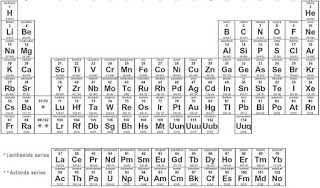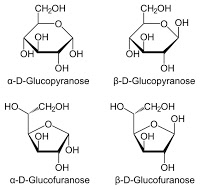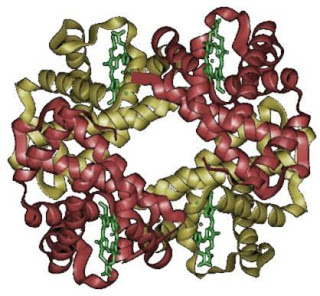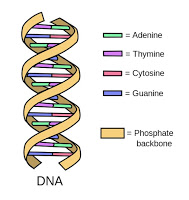Biology










- #86 Energy And Atp
All living organisms need a continuous supply of energy to maintain their metabolism. They must absorb either light energy in photosynthesis or chemical potential energy to do the work necessary to stay alive. Such work includes: ? Anabolic reactions:...
- #7.2 Biological Molecules - Syllabus 2016
2.1 Testing for biological molecules 2.2 Carbohydrates and lipids 2.3 Proteins and water This section introduces carbohydrates, proteins and lipids: organic molecules that are important in cells. Nucleic...
- #7.1 Biological Molecules - Syllabus 2015
? Structure of carbohydrates, lipids and proteins and their roles in living organisms ? Water and living organisms Learning Outcomes Candidates should be able to: (a) [PA] carry out tests for reducing and non-reducing sugars (including using colour...
- Metabolism
METABOLISM All the biochemical reactions taking place inside a living system together constitute metabolism. E.g.GlycolysisKreb's cycleRespirationPhotosynthesis Removal of CO2 from amino acids to form amine.Removal of amino group in a nucleotide...
- Cell Anatomy
Cell Anatomy.Cell (from Flank Organ of Syrian Hamster)A cell is the functional unit of living beings. All the living beings are made up of one or more cells (the only exception are viruses, not considered living beings by many scientists). Each cell in...
Biology
Structure of Living Beings.

Differentiation between living beings and inert matter is an easy question, at least in appearance. This is, however, because we usually think about living things that can be clearly seen growing, moving or, summing up, changing. But if we take a look at our environment, we discover that we are surrounded by living beings, such as lichens, that live attached to rocks, that can be hardly differentiated of a simple stain. We need to do a deeper analysis to prove that it is really an organism, because it grows very slowly, it does not move and reproduces in a peculiar way, with no seeds, or fruits.
We usually forget that many living beings are not visible to the naked eye. And sometimes the boundaries of life are quite diffuse. Viruses, for instance, are a nucleic acid surrounded by a capsule made up of proteins, unable to reproduce by themselves, so are they real living beings? We can take the matter further, and talk about plasmids, those simple circular nucleic acids that live in bacteria and plant cells, are they living beings only because they are able to control their own replication? Or prions, made up only of proteins, but capable of reproduction and even to cause diseases.
Vital Functions and Complexity.
The main difference between living beings and inert matter is the ability of living beings to carry out the three vital functions.
- Nutrition: ability of living beings to take matter or elements from the environment (these elements are called nutrients) and use them to obtain energy or to be transformed into prime matters that will be used to produce their own inner medium.
- Relation (also called Interaction): Ability of living beings to perceive stimuli from the environment, analyse them and make a response. Relation is a complex process related not only to communication, but also to all the perceptions and responses. For instance, when an animal sees a predator and decide to run away or hide, that is a type of relation too. Or simply when a bacterium moves towards food.
- Reproduction: Ability of living beings to produce new living beings, similar or identical to the progenitor. This is the system used to transmit genetic information to the next generation, preserving this information and the species at the same time.
Is there any chemical difference between living beings and inert matter? Although the living beings and the inert matter that surround them is based on the same chemical elements, there are some important differences related to the amount of these elements. There are chemical elements that are very abundant in inert matter but not in living beings, and chemical elements very abundant in living beings but rare in matter. For instance, carbon or nitrogen are very abundant in living beings, but rare in inert matter. On the other hand, aluminium is very abundant in rocks, but is a trace element in living beings.
There are, besides, important differences related to:
- Complexity: Living beings have chemical components more complex than inert matter. Complex organic molecules are exclusive of living beings.
- Order: The inner structure of living beings is always extremely ordered. This order, besides, must be preserved. On the other hand, inert matter tends to become chaotic or disordered.
The chemical reactions in living beings must take place under severe control. These chemical reactions are usually very complex. We call metabolism to all the chemical reactions that take place in a living being.
Metabolism can be divided into two groups of chemical reactions:
- Catabolism: destructive chemical reactions. During these chemical reactions, complex structures are transformed into simpler molecules. The catabolic reactions have two transcendental functions:
- Provision of energy.
- Renew structures (and turnover).
- Anabolism: constructive reactions. Complex structures are produced from simpler molecules. These chemical reactions consume energy.

Living beings are, in some way, systems with rising complexity. We can draw a diagram showing this this rising complexity, beginning with the atoms and finishing in the complete organism, or further, with the populations, ecosystems or even the whole complete biosphere.
Atoms and Elements.
Around one hundred different atoms, or chemical elements can be found in nature. The rest of elements (until the 119 currently discovered) are not natural (must be produced in laboratories and last millesimal parts of second). Not all the natural elements can be found in living beings, though many of them are present, in high or low quantities.

The chemical elements of living beings can be divided into two groups:
- Biogenic (or Essential) Elements: They are present in important amounts. These are the eleven Biogenic Elements: Carbon (C), Hydrogen (H), Oxygen (O), Nitrogen (N), Calcium (Ca), Sodium (Na), Phosphorus (P), Potassium (K), Magnesium (Mg), Sulphur (S) and Chlorine (Cl). Carbon, Hydrogen, Oxygen and Nitrogen are the most abundant by far. Some books include Iron (Fe) as a Biogenic Element (in other books it is included into the Trace Elements).
- Trace Elements: These elements are present in living beings in low quantities, but they are essential (living beings cannot live without them). There are many different trace elements. Maybe the better known ones are Iodine (I), Copper (Cu), Silicon (Si), Selenium (Se) or Manganese (Mn). The absence of one trace element cause a characteristic disease. For instance, lacking of Iodine is related to a disease called goitre.
Although some chemical elements can be found isolated, they usually join forming molecules.
Molecules.
Molecules can be defined as two or more atoms, identical or different, joined forming a chemical substance. There are two types of molecules: inorganic and organic.
Inorganic Molecules.
They are simpler, and can be formed in a natural way with no intervention of living beings. The most abundant and important inorganic molecule in living beings is the water (H2O). Life is related to water. The first living beings were evolved in the oceans. And is always the main component of living beings. In human beings, for instance, our mass is 70% water (some tissues, such as bone or fat tissue, have low percentage of water, others such us nervous tissues have high amounts). Another important inorganic molecule is O2, called molecular oxygen. This is the oxygen we breathe and the molecule used by our cells to respire. Another very important inorganic molecule is CO2, the carbon dioxide produced in the respiration. And mineral salts, a large group of salts solved in our body water, or crystallised such as the hydroxyapatite slats (made up of calcium carbonate crystals) in our bones.
Organic Molecules.
These molecules are more complex than inorganic ones, and a living being is required to their formation (although there are some exceptions, such us methane, that can be formed in volcanoes, for instance). There is a huge variety of Organic Molecules. They can be classified into the following groups:

- Sugars: Also called carbohydrates. There are many types of sugars, but the most important are glucose and fructose. The main function of these model clues is the provision of energy to the living being: they are metabolised to obtain the energy that the living being needs to stay alive. Animals use carbohydrates to obtain energy, but they do not store high amounts of these molecules, because the movement of the body is very important to animals, and carbohydrates are too heavy. Sugars have other functions. For instance, they are an important component of the biological membranes. In the cell membrane they are very important as an informative or signalling molecule: cells can recognise other cells using sugar chains attached to the cell membrane. They can be used by cells as inner signalling molecules (the sugar mannose is used in the cell to control the movement of vesicles, for instance). Other sugar chains are used as structural support in some tissues, such as glycosaminoglycans in the dermis.
- Lipids: Also known as fats. They are the main system to store energy in animals, because fats are lighter than sugars. They have also a important structural function, because lipids are the main components of phospholipids, and phospholipids are the most abundant macromolecule in biological membranes. Some lipids can be also signalling molecules. Some hormones are lipids or derived substances.

- Amino Acids: They are the component of proteins. There are only 20 different amino acids, common to all the living beings. These 20 amino acids join to form proteins. In fact, proteins can be defined as lineal chains of amino acids with no ramifications. So amino acids are clearly structural molecules. Sometimes living beings use amino acids to obtain energy, but only if there are not sugars available. They can be also signalling molecules, some hormones and neurotransmitters are transformed amino acids.

- Vitamins: Vitamins are organic molecules that the living being needs to live but can not produce, so they must be consumed from other living beings. They can be classified according to their chemical composition. We can find hydrophilic vitamins (all the B vitamins) and lipophilic (D orE vitamins, for instance).
- Other Organic Molecules: There are other important organic molecules that do not belong to any of these groups. Xantic bases, for instance, that are an important component of nucleic acids (DNA and RNA).
Macromolecules.
Macromolecules are large organic molecules, made up of several organic molecules joined. There are lots of different organic molecules. We are going to examine the most important ones:
- Polysaccharides: Macromolecules made up of many sugars joined. These sugars form chains that can be lineal or with ramifications. They can have different functions. They can be used to store energy. For instance, glycogen in animals. Animals build up glycogen in their liver an in their muscles. Plants build up polysaccharides to store energy. Some polysaccharides are an important structural molecule. We talked about glycosaminoglycans when we saw sugars. Polysaccharides are also a signalling molecule, as we saw. The sugar trees in the surface of erythrocytes are an example. These sugars are the responsible of the blood groups in humans.
- Proteins: Chains of amino acids with no ramifications. Proteins are usually very large, and they are made up of hundreds or even thousands amino acids.

Proteins can have other molecules attached, such us sugars (they are called glycoproteins), lipids (they are called lipoproteins) or other proteins (they are called complex proteins). According to their function, there are several types of proteins. Enzymes are not only the most important type of proteins, but also the main functional molecule of the living beings. Enzymes are proteins that accelerate the chemical reactions that take place in living beings. Due to this, enzymes are the main functional molecule, because they control the chemical reactions: many chemical reactions would not ever take place without the intervention of an enzyme. And all the chemical reactions of the living being are controlled by one enzyme, so enzymes control all the chemical processes of the cells. Other proteins have structural functions. Collagen, for instance, is a filament-shaped protein that give physical support to many tissues (such as the conjunctive, the cartilage or the bone tissues). And finally there are some non enzymatic proteins that carry out several functions, such us the proteins that transport substances through the plasmatic membrane of the cell (channel proteins).

- Phospholipid: Made up of two lipids joined, by a phosphate link, to a organic molecule, mainly a diglyceride. Phospholipids are the main structural component of the biological membranes. Phospholipids have two different parts, one of them made up of lipids, the other one made up of other chemical substances. The lipids form the tiles of the molecule and have lipophilic and hydrophobic properties. The diglicerides and the phosphate group form the head of the molecule and have hydrophilic and lipophobic properties. These properties is responsible for the ability of phospholipids to organise themselves as lipid bilayers.


- Nucleic Acids: Nucleic acids are the main system to store and transmit information. This information must be stored, codified and translated. It must be, besides, transmitted to next generations. There are two types of nucleic acids: DNA and RNA.
- DNA (Deoxyribonucleic Acid): This macromolecule is the main system to store information in the whole known living beings. DNA is a lineal molecule made up of two strands forming a double helix. The information is codified according to the sequence of the xantic basis in the molecule (there are four different basis called Adenine, Thymine, Cytosine and Guanine (A, T, C, G). This sequence is translated into the sequence of amino acids of the proteins. What it means that DNA has the information about how to produce all the proteins of the living being. As we have seen, proteins are the main functional proteins of the cell, and enzymes control all the chemical reactions. DNA control the enzymes that must be produced in a cell at a moment, so DNA control the functions of the cell in a indirect way. It is decided which structural proteins are necessary too. Summing up, controlling the production of proteins, DNA is also controlling all the processes that take place in the cell. DNA is a very large molecule that is always stored and protected in the nucleus of the cell (it is only outside of the nucleus during the cell reproduction). In multicellular organisms, all the cells have the same DNA, but different cells only use the part of the DNA information that they need. The cells of our skin, for instance, have DNA with the information about how to make digestive proteins, although this information will not ever be used by these cells.
- RNA (Ribonucleic Acid): This is other important nucleic acid. RNA has some chemical differences with the DNA. First, in RNA we find the sugar Ribose, whereas in DNA the sugar that can be found is Deoxyribose. RNA has the xantic base Uracil instead of Thymine. And RNA is a simple strand that never forms double helix. We have said that DNA is always located in the nucleus of the cell. RNA, however, is mainly located out of the nucleus, in the cytoplasm of the cell. In fact, DNA is so important that it must be always in the nucleus to be protected. Proteins are not produced in the nucleus, they are produced in the cytoplasm. To avoid possible damage to the DNA, when the cell needs to synthesise a protein it produce a copy of the part of the DNA that codifies for that protein. The copy of that part of DNA is called RNAm (messenger RNA). The RNAm can exit of the nucleus and be used in the cytoplasm to produce the required protein. To complete the synthesis of proteins other two RNA are necessary. The first one is called RNAt (transferential RNA), that have the decodification system to transform a sequence of xantic basis into a sequence of amino acids. The second one is called RNAr (ribosomal RNA), and it is a part of the ribosomes, the cytoplasmic organs where protein synthesis takes place.

- #86 Energy And Atp
All living organisms need a continuous supply of energy to maintain their metabolism. They must absorb either light energy in photosynthesis or chemical potential energy to do the work necessary to stay alive. Such work includes: ? Anabolic reactions:...
- #7.2 Biological Molecules - Syllabus 2016
2.1 Testing for biological molecules 2.2 Carbohydrates and lipids 2.3 Proteins and water This section introduces carbohydrates, proteins and lipids: organic molecules that are important in cells. Nucleic...
- #7.1 Biological Molecules - Syllabus 2015
? Structure of carbohydrates, lipids and proteins and their roles in living organisms ? Water and living organisms Learning Outcomes Candidates should be able to: (a) [PA] carry out tests for reducing and non-reducing sugars (including using colour...
- Metabolism
METABOLISM All the biochemical reactions taking place inside a living system together constitute metabolism. E.g.GlycolysisKreb's cycleRespirationPhotosynthesis Removal of CO2 from amino acids to form amine.Removal of amino group in a nucleotide...
- Cell Anatomy
Cell Anatomy.Cell (from Flank Organ of Syrian Hamster)A cell is the functional unit of living beings. All the living beings are made up of one or more cells (the only exception are viruses, not considered living beings by many scientists). Each cell in...
